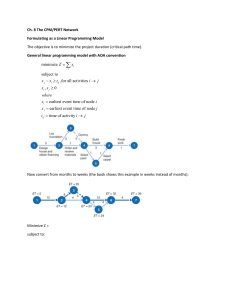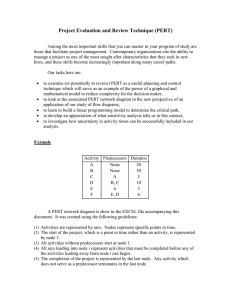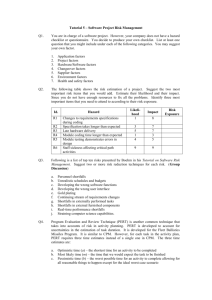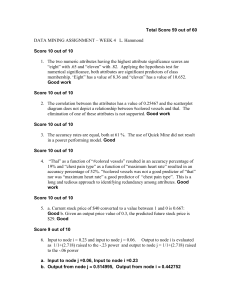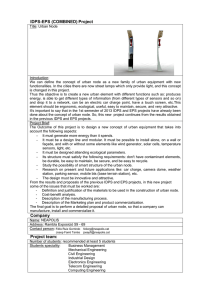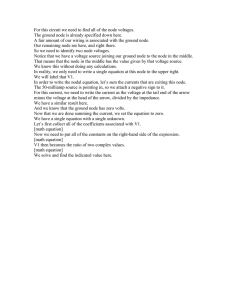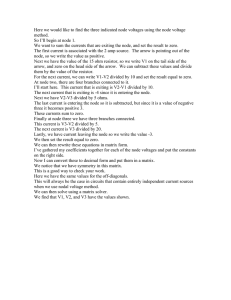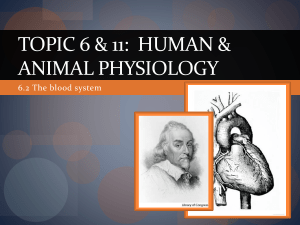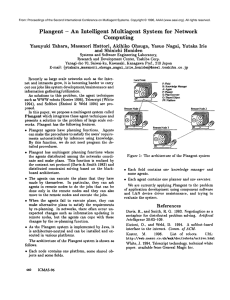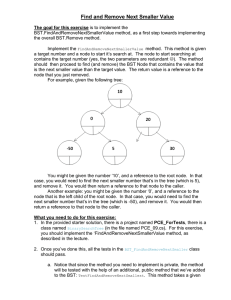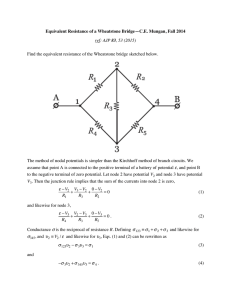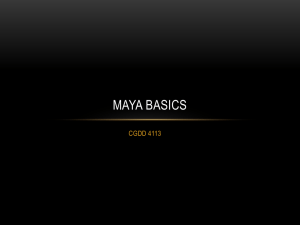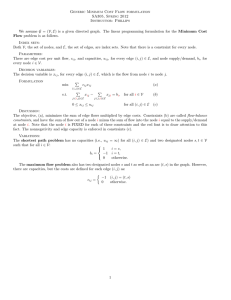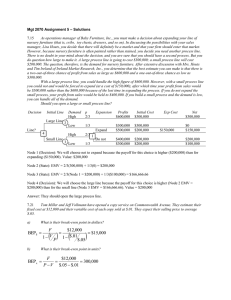Exercises on Concepts in PERT/CPM
advertisement
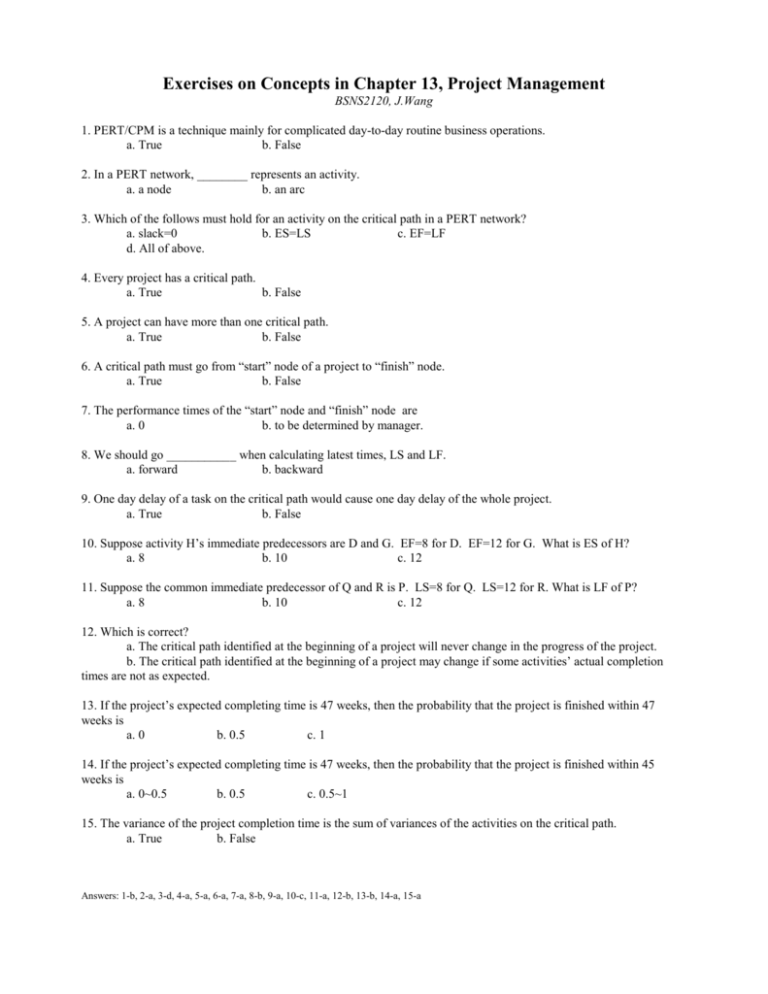
Exercises on Concepts in Chapter 13, Project Management BSNS2120, J.Wang 1. PERT/CPM is a technique mainly for complicated day-to-day routine business operations. a. True b. False 2. In a PERT network, ________ represents an activity. a. a node b. an arc 3. Which of the follows must hold for an activity on the critical path in a PERT network? a. slack=0 b. ES=LS c. EF=LF d. All of above. 4. Every project has a critical path. a. True b. False 5. A project can have more than one critical path. a. True b. False 6. A critical path must go from “start” node of a project to “finish” node. a. True b. False 7. The performance times of the “start” node and “finish” node are a. 0 b. to be determined by manager. 8. We should go ___________ when calculating latest times, LS and LF. a. forward b. backward 9. One day delay of a task on the critical path would cause one day delay of the whole project. a. True b. False 10. Suppose activity H’s immediate predecessors are D and G. EF=8 for D. EF=12 for G. What is ES of H? a. 8 b. 10 c. 12 11. Suppose the common immediate predecessor of Q and R is P. LS=8 for Q. LS=12 for R. What is LF of P? a. 8 b. 10 c. 12 12. Which is correct? a. The critical path identified at the beginning of a project will never change in the progress of the project. b. The critical path identified at the beginning of a project may change if some activities’ actual completion times are not as expected. 13. If the project’s expected completing time is 47 weeks, then the probability that the project is finished within 47 weeks is a. 0 b. 0.5 c. 1 14. If the project’s expected completing time is 47 weeks, then the probability that the project is finished within 45 weeks is a. 0~0.5 b. 0.5 c. 0.5~1 15. The variance of the project completion time is the sum of variances of the activities on the critical path. a. True b. False Answers: 1-b, 2-a, 3-d, 4-a, 5-a, 6-a, 7-a, 8-b, 9-a, 10-c, 11-a, 12-b, 13-b, 14-a, 15-a
